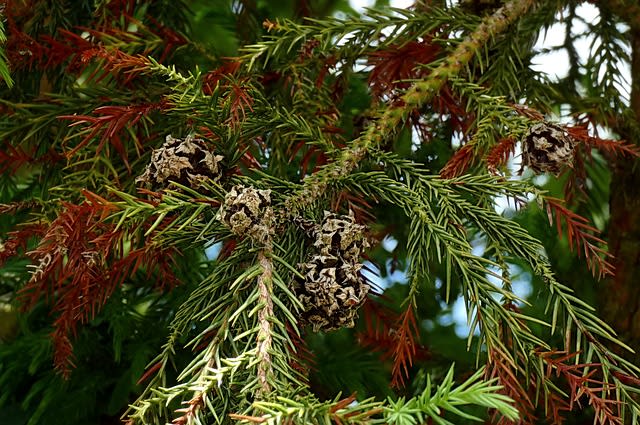
🌿 Morphology
🌞 Growing conditions
🌍 Origin and family
🌾 Uses
Warning: Despite the care taken in writing this sheet, it is essential to cross-reference sources before using or consuming any plant. When in doubt, consult a qualified professional
Permaculture uses
Provides fast-growing, rot-resistant timber for construction and woodworking. Used as a windbreak or screen. Can be coppiced. Requires acidic soil.
Permapeople description
Cryptomeria japonica is an evergreen coniferous tree native to Japan. It is commonly known as Japanese cedar, although it is not a true cedar but rather a member of the cypress family.
Botanical description
Cryptomeria japonica is a monoecious evergreen coniferous tree in the cypress family Cupressaceae, native to Japan. It can grow to 70 m (230 ft) tall and 4 m (13 ft) trunk diameter. The bark is reddish-brown, peeling in vertical strips. The leaves are needle-like, 0.5–1 cm long, arranged spirally on the shoots, and curved inwards. The seed cones are globose, 1–2 cm in diameter, with about 20–40 scales. There are several cultivars selected for different foliage colors and growth habits, including 'Elegans' with juvenile foliage retained into adulthood and 'Globosa Nana' a dwarf cultivar.
Companion planting
Generally compatible with other trees requiring acidic soil. Avoid planting near plants sensitive to acidic conditions.
Propagation methods
Propagation is typically done by seed, although cuttings can be taken from semi-hardwood in late summer. Grafting is used to propagate specific cultivars.
History and traditions
Cryptomeria japonica has been cultivated in Japan for centuries, and is often planted around temples and shrines. The wood is valued for its fragrance, durability, and resistance to rot. In Japan, it is a symbol of strength and longevity. It has been introduced to many parts of the world as an ornamental tree.
Usage calendar
Seeds ripen in autumn. Planting is best done in spring or autumn. Pruning should be done in late winter or early spring. Cones mature in autumn of the first year.
